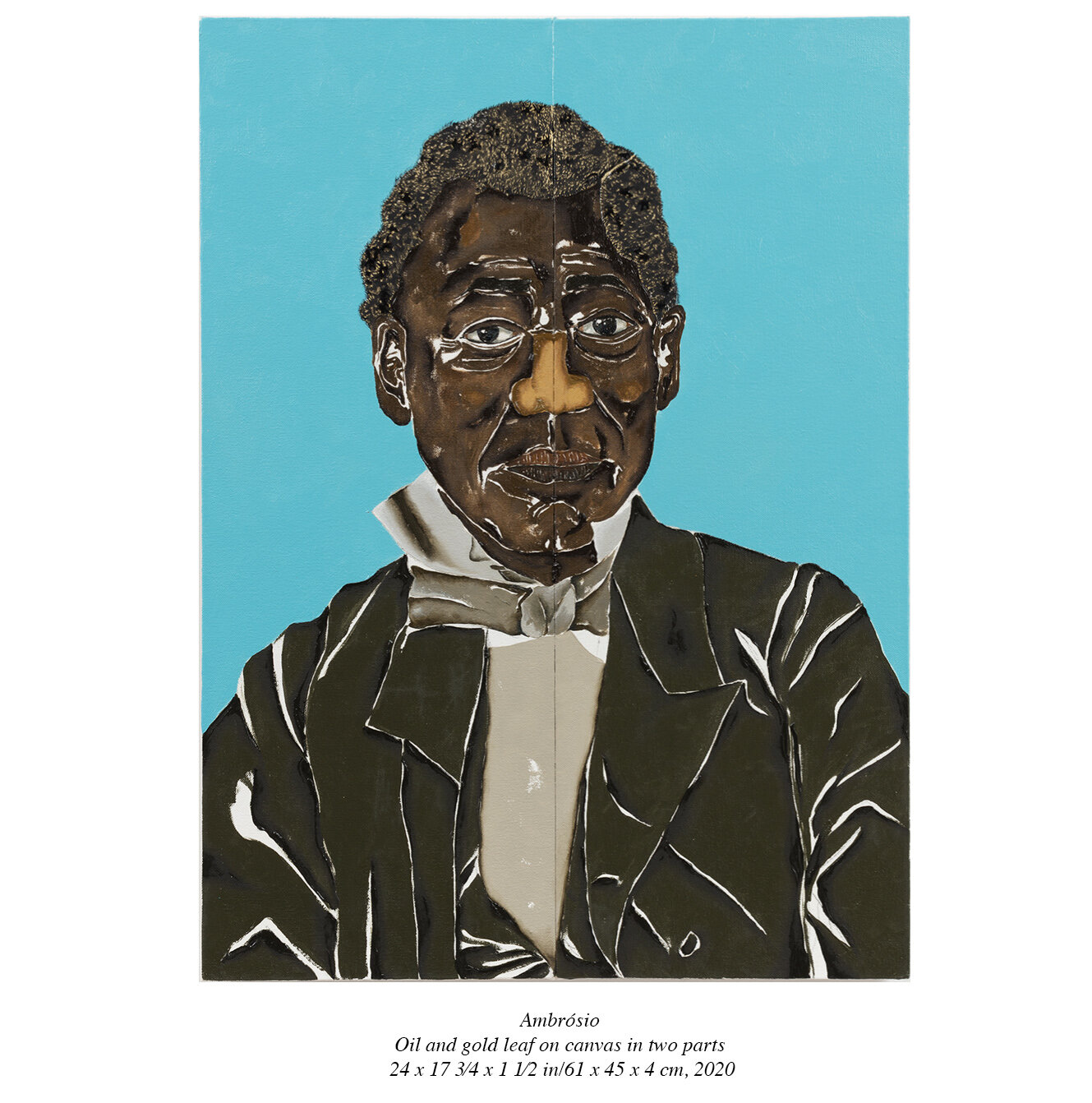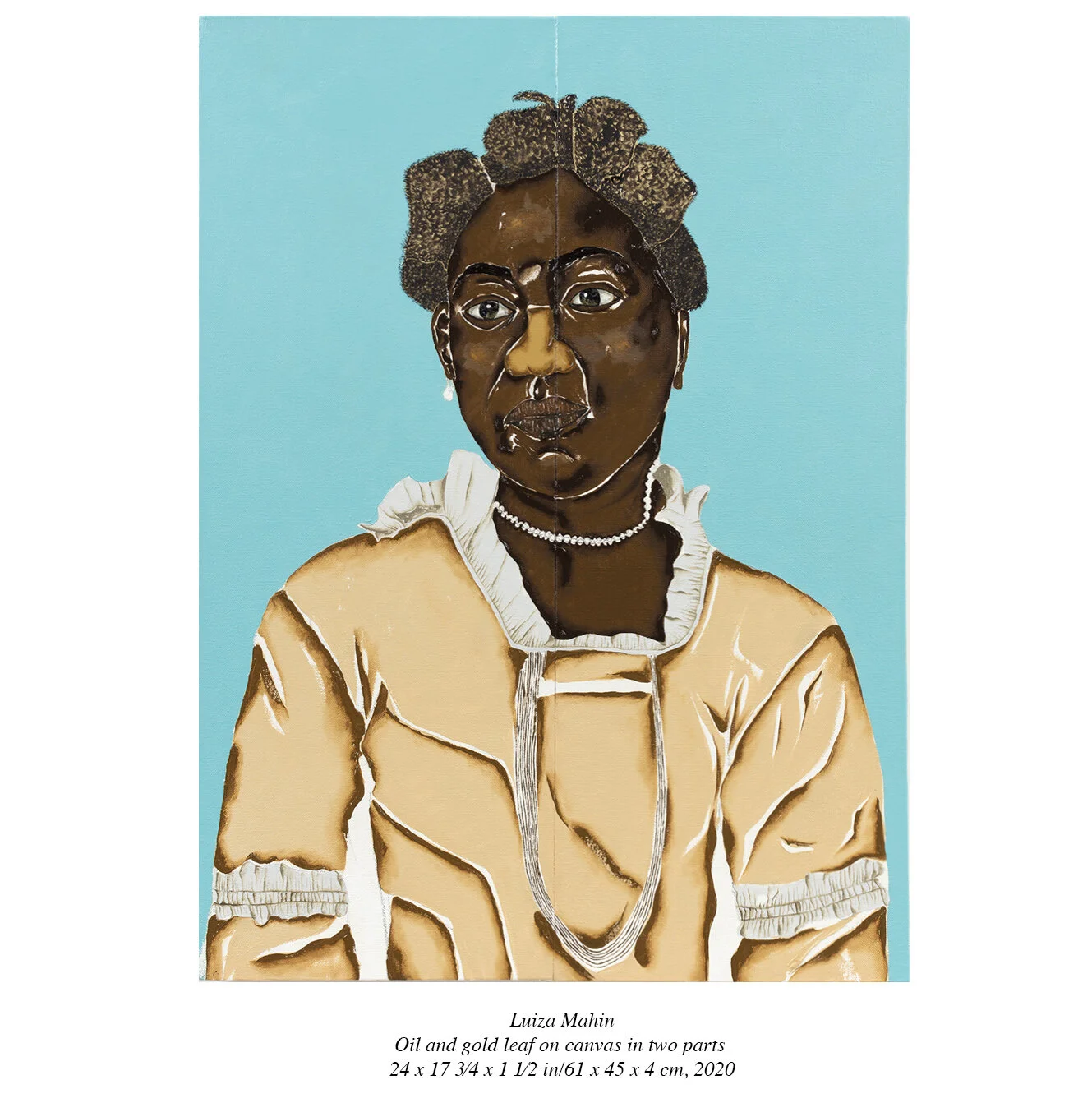Issue # 15 Dalton Paula
Text By: Lilia Moritz Schwarcz
























Dalton Paula: A Kidnapper of Souls.
Dalton Paula is a poet of visuality. He was born in Brasília, the capital of Brazil, and is currently based in Goiânia, both modern cities built in the twentieth century, long after the abolition of slavery in Brazil in 1888. In Goiás, manifestations of the Afro-Brazilian culture were, for a long time, hidden and rarely openly discussed. The cultural imaginary of Brazil was that of a white country, predominantly European with a small, often exoticized mestizo and black population. For Paula, making art is a political and poetic act, as he lays bare the complex culture and history of Brazil through the subjects he remembers in his portraits and the way he mines his own personal narrative.
In an interview for Contemporary Art, Paula said that “My personal history and experiences as a black man pervade my work in both direct and indirect ways”. This is apparent in the way he explores ritual Afro-Brazilian religious practices; the transatlantic slave trade; cultural translation; the circulation of black mythologies, techniques, philosophies and religions; modes of resistance; and the role of visuality in this Afro-Atlantic space, which both separates and unites the African continent, the Caribbean and the Americas.
The artist works between painting, installations, performance, objects, photography and video without establishing a hierarchical order between different methods and without forgetting their expressive poetic potential, since the choice always emerges from a poetic and personal experience.
Most of his works are conditioned by a critical and deeply human interpretation of historical or daily events. They are often impregnated by a religious, mystical and spiritual aspect, which comes from Afro-Brazilian syncretism such as Candomblé and the worship of African Orixas. By bringing together different Brazils, Paula exposes a foundational violence while also revealing a profound and rooted popular culture that celebrates Afro-Brazilian life with proud depictions of black subjectivity, bodies, characters and souls.
For Dalton Paula, art is a process of silencing and healing; a process of discovering anonymous bodies and building identities. I first met Dalton as an artist and later he became a friend. In 2014, Adriano Pedrosa and I curated an exhibition at Instituto Tomie Ohtake in São Paulo called “Histórias mestiças” (Mestiço histories). The idea was to reckon with “mestiçagem” in Brazil, positing it as a concept that allows social inclusion and exclusion at the same time.
One day, as we researched the show, we saw a beautiful and powerful painting composed, literally, over encyclopedias. The work was reminiscent of old, popular photos in Brazil from the beginning of the twentieth century that had been artificially colorized of families, individuals or groups of friends. Dalton decided to intervene and expand the limits of representation in these photos to include members of the church, workers, artists, or even unexpected couples, always in a very sensitive and poetic way. But that was just the beginning. In 2017, while working on the exhibition Histórias afro-atlânticas at MASP, Adriano and I had another idea. We commissioned Dalton Paula, asking him to work on two portraits of Afro-Brazilians figures that had almost disappeared in Brazilian history and, consequently, from the Brazilian imagination: Zeferina and João de Deus, two rebels and black leaders from Bahia.
Dalton Paula simply “kidnapped their souls and bodies”!
From that day on, I could not imagine these two black protagonists of Brazilian history without remembering Paula’s portraits. The artist gave life, color and imagination to these hidden figures in Brazilian history. The images were so beautiful and strong, at the same time, that the two portraits were immediately transformed, by the public and art critics, into a kind of “post card” of the exhibition. Both characters appear with a very dignified expression, with their noses prominent in a kind of inversion of the racial stereotype. In the meantime, Dalton Paula received a series of international and Brazilian prizes, opened an art school in Goiânia for young artists, and continued working and researching the roots of Brazil.
This was the beginning of the history of this new exhibition of 24 different portraits based on real people who have never been portrayed in Brazilian history. Each portrait tells a different story that is at once particular and universal. More than this, each portrait bears its own dignity: fancy clothes, gold-colored hair, expressive looks, protruding noses, strong mouths, and arresting and poetically detailed skin color. The idea is not to achieve a realistic portrait, but to give place to desire and other narratives that are a fundamental part of these portraits.
The works are composed of different layers but always maintain the same dignity. The patina of time is inscribed on them. The portraits serve as reminders to the collective imaginary, like those colorized and popular photos that were used to give back the place and the desire to the person that wanted to be photographed or, in this case, painted.
That is why these Afro-Brazilian figures seem lost in time, sometimes very poor, sometimes with the marks of suffering present on their faces, sometimes coming from sugar cane plantations, sometimes from new born towns, sometimes enslaved, sometimes free black men and women, sometimes quilombolas (runaway slaves), sometimes rebels, sometimes religious leaders or sailors, but always very well dressed and proud of themselves. They are presented how they would have, or wanted to have, imagined themselves.
Like an archaeologist, Dalton Paula searches for traces, clues and details, or for the light that still exists in these people but that we can no longer see. It is a work that transforms shadow into light, lost time into new time, a visual research that tries to find a place for new discoveries.
To conceive this exhibition, Dalton Paula entered into a real and metaphorical process, a process of reclusion in a time of “social isolation”. The artist moved to NY in February 2020, in the context of the coronavirus pandemic, and spent three months alone in an empty space, alone but full of souls to keep him company. The result is a room full of people, strong presences, a great spirituality. An experience so strong that it was more like a dive into the time of our ancestors. That is why the artist had to live with the souls of his characters, live and create intimacy with them, and thus kidnap them.
Paula creates new memories, new forms of imagination for a country that received the most African slaves, taken from their homes, than any other country from the 16th to 19th centuries and that today has the second largest population of African origin after Nigeria. This is one of the main goals of Dalton Paula, as a person very much connected to Afro-Brazilian religions, rituals, existences, subjectivities and experiences.
The artist gives back to the Brazilian imagination those that, for centuries, were silenced and almost completely removed from visual depictions.
This brilliant artist, this poet artist, this interpreter of Brazil, is also, fundamentally, a kidnapper of ghosts and souls.
Lilia Moritz Schwarcz
Dalton Paula was born in 1982 in Brasilia and lives in Goiânia.
Paula works with painting, photography, and installation to explore the exigencies of the Black Atlantic, knowledge production in the long wake of racial violence, and the religious rites and rituals of the African diaspora.
Of particular note are his large-scale paintings, spartan assemblages of objects over abstracted earth-toned backgrounds, and portraits. Paula’s ongoing interest in portraiture reflects his deep engagement with the framework of Brazilian history; his subjects are often historical figures whose faces have never been recorded, such as Zeferina, a woman who founded a community for escaped slaves in Northern Brazil. His installation work continues this line of inquiry and further develops his rich symbolic language and appreciation of material culture.
Paula’s work has been exhibited at the São Paulo Biennial (2016); Instituto Tomie Ohtake, São Paulo (2017); New Museum Triennial, New York (2018); the 11th Bienal do Mercosul, Porto Alegre (2018); “Histórias Afro-Atlânticas,” Museo de Arte de São Paulo (MASP) and Instituto Tomie Ohtake, São Paulo (2018); and “Allied with Power,” Pérez Art Museum Miami, Miami (2020).
Lilia Moritz Schwarcz is a Brazilian historian and anthropologist. She is a doctor in social anthropology at the University of Sao Paulo, full professor at the Faculdade de Filosofia, Letras e Ciências Humanas in the same institution, and visiting professor (Global Scholar) at Princeton University.
In 1986, Schwarcz co-founded the Companhia das Letras publishing house with her husband Luis Schwarcz. She is a curator for the Sao Paulo Museum of Art and writes a column at the news website Nexo Jornal.

